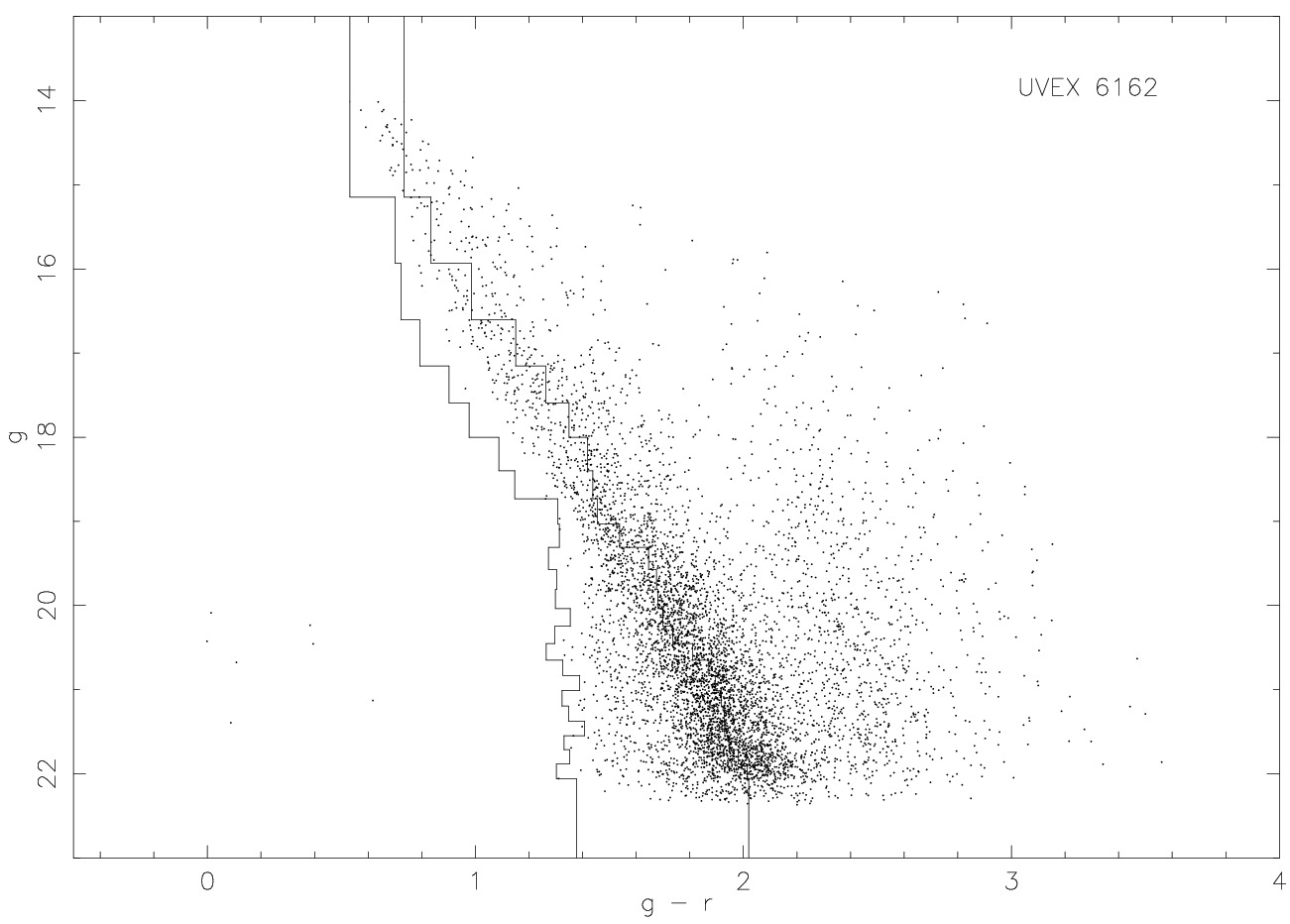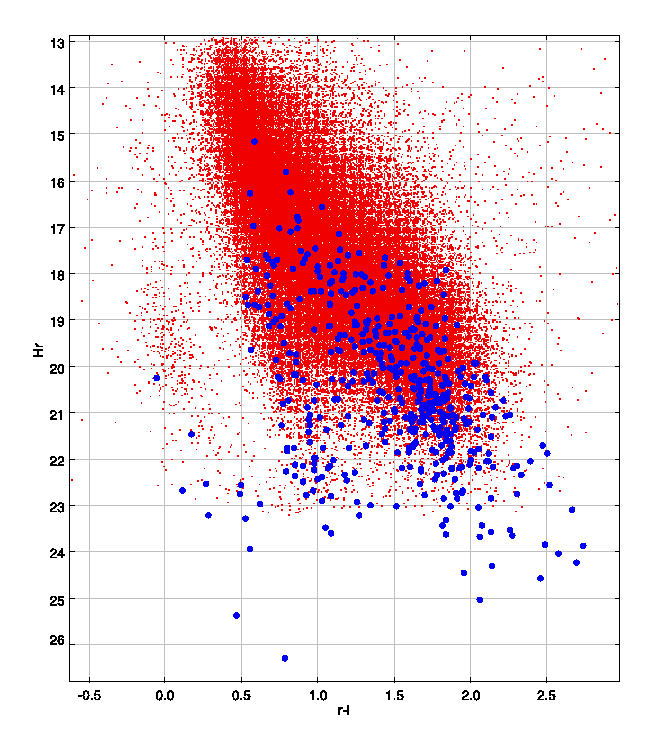
Home
The SurveyScience
Status
Observing
People
Data
Publications
Links
Science objectives include:
- Characterizing the population and space density of white dwarfs in our Galaxy
- Characterizing the population and space density of white dwarfs binaries in our Galaxy: AM CVn stars, Cataclysmic Variables, detached binaries
- Characterizing the population and space density of subdwarf B-stars in our Galaxy
- With IPHAS: A first digital proper motion survey of the Galactic Plane
- With IPHAS: A 3D Dust mapping of our Galaxy
The basis `tool' of the UVEX survey is a colour-colour and
colour-magnitude diagram as shown below. From these colour-colour and
colour-magnitude diagrams UV-excess sources are automatically selected
as described in Verbeek et al. (2010), in prep. The
full lines show the middle of the main-sequence locus (right) and the
3-sigma blue edge wrt. to this main location. Objects located to the
blue (left) of this 3-sigma line are classified as UV-excess sources.
In this field 7 UV-excess sources are clearly identified.
Using a cross-matching with the IPHAS data proper motions are
determined, as described in Deacon et al., 2009 (for the IPHAS-POSSI
x-match).
The difference between the IPHAS-POSSI x-match and the higher proper
motion IPHAS-UVEX x-match is shown in the reduced proper motion diagram
below, where the blue symbols are the IPHAS-UVEX x-match and the red
points are the IPHAS-POSSI proper motion objects in the same area. This
shows the increased depth of the combination of two digital surveys,
even if the baseline is shorter than that of the IPHAS-POSSI x-match.


